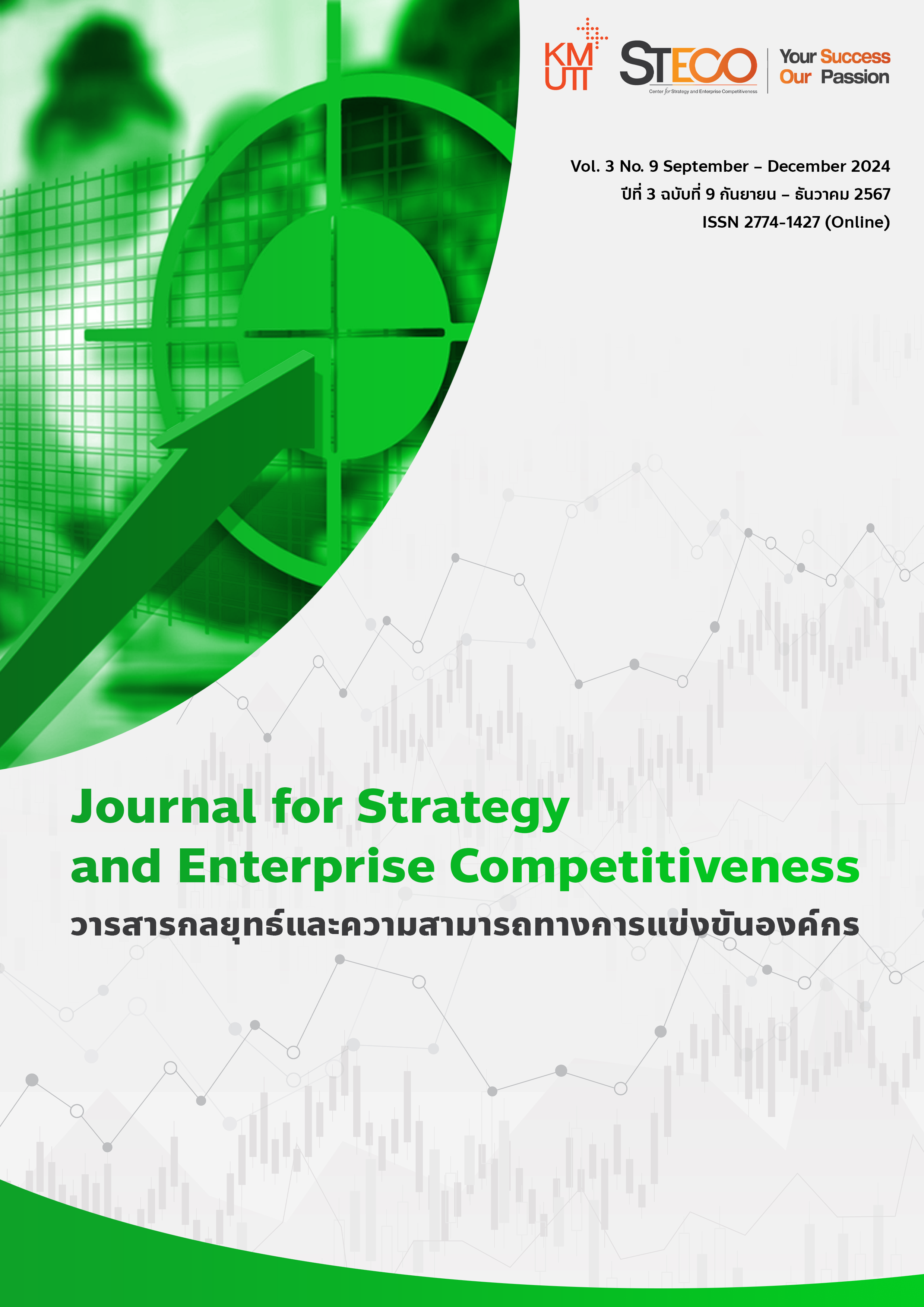Study of factors in specifying the scope of work and communication that affects the control of the scope of work in electrical communication and telecommunications systems projects
Keywords:
Scope creep, Project management, Electrical, communication, and telecommunication (ECT) projects, Project scope definition, Communication effectivenessAbstract
This study examined how clearly defining project scope and fostering effective communication can help control scope creep in electrical, communication, and telecommunication (ECT) projects. The research combined quantitative and qualitative methods. Quantitative analysis explored the links among various factors such as complexity, specification, risk, communication, client requirements, and a project's susceptibility to scope creep which can indicated by scope clarity, new scope addition and scope modification. Qualitative data, gathered through open questionnaire surveys, provided insights into methods for mitigating scope creep. A strong correlation emerged between scope creep and factors like communication effectiveness, managing client requirements, and proactive risk management. Ineffective communication was identified as the most significant factor, leading to misunderstandings and unplanned additions to the project scope. Based on these findings, the research recommends prioritizing clear scope definition, establishing formal communication plans, and implementing proactive risk management strategies. Additionally, utilizing project management tools and fostering open communication throughout the project lifecycle can significantly reduce scope creep. The benefits extend beyond individual project success. Implementing these recommendations can lead to improved communication efficiency, stronger client relationships, and enhanced project management practices within organizations. Furthermore, the research contributes to a more informed industry landscape by sharing knowledge and improving the understanding of scope control in ECT projects.
References
Agresti, A., Franklin, C. A., & Klingenberg, B. (2009). Statistics: The art and science of learning from data (4th ed.). Pearson.
Ajmal, M. M., & Khan, M. (2019). Exploring factors behind project scope creep – stakeholders’ perspective. International Journal of Managing Projects in Business, 13(3), 483-504.
Ajmal, M. M., Khan, M., & Angappa, G. (2021). Managing project scope creep in construction industry. Engineering Construction & Architectural Management.
Baccarini, D. (2016). Defining the project. In Project management for engineering and construction. McGraw-Hill Education.
Chapman, C. (2016). Scheduling Techniques. In Project planning knowledge.
Chen, J., Viardot, E., & Brem, A. (2019). Innovation and innovation management. In The Routledge Companion to Innovation Management (pp. 3-16).
Cleland, D. (2017). Communication management. In Project management: Strategic design and implementation. McGraw-Hill Education.
Cleland, D. (2017). Stakeholder management in project management: Strategic design and implementation. McGraw-Hill Education.
Contract Management Institute. (2016). Contract management standard. Contract Management Institute.
Creswell, J. W., & Plano Clark, V. L. (2018). Designing and conducting mixed methods research (3rd ed.). SAGE.
Field, A. (2016). Correlation. In Discovering statistics using R (2nd ed.). SAGE Publications Ltd.
Gartner. (2022). Top Trends in Infrastructure and Operations. Retrieved form https://www.gartner.com/en/newsroom/press-releases/2022-12-08-gartner-identifies-the-top-trends-impacting-infrastructure-and-operations-for-2023
Ibdayanti, D. R., Oktaviani, C. Z., & Husin, S. (2024). Multiple regression analysis on the influence of communication management on project success. E3S Web of Conferences, 476, 1-12.
International Institute of Business Analysis. (2016). Communication management. In A guide to the business analysis body of knowledge (BABOK® Guide) (3rd ed.). International Institute of Business Analysis.
International Institute of Business Analysis. (2016). Communication management. In A guide to the business analysis body of knowledge (BABOK® Guide) (3rd ed.). International Institute of Business Analysis.
International Institute of Business Analysis. (2016). Eliciting requirements. In A guide to the business analysis body of knowledge (3rd ed.). International Institute of Business Analysis.
International Project Management Association. (2016). Communication management skills. In The IPMA competence baseline. International Project Management Association.
International Telecommunication Union (ITU). (2023). Regulatory Framework for the ICT Industry. International Telecommunication Union.
Ismail, S., Jaqub, U., Anwar, F., Mahdi, M., Cheema, M. N., Malik, M. B., & Shahid, A. R. (2020). The Impact of Scope Creep on Project Success: An Empirical Investigation. IEEE Access, 1(2), 1.
McKinsey Global Institute. (2017). The Future of Work: Automation, Employment, and Productivity. McKinsey Global Institute.
Moretti, F. (2005). Graphs, maps, trees: Abstract machines for literary history. Verso.
Mukherjee, B. K. (2017). Correlation and regression. In Applied statistics & probability for engineers. Taylor & Francis Group.
Neuendorf, K. A. (2017). Counting and describing. In The content analysis guidebook. SAGE Publications.
Project Management Institute. (2013). Practice standard for project requirements management. Project Management Institute.
Project Management Institute. (2016). The PMI competence baseline. Project Management Institute.
Project Management Institute. (2017). A guide to the project management body of knowledge (PMBOK® Guide) (7th ed.). Project Management Institute.
Project Management Institute. (2017). Project stakeholder management. In A guide to the project management body of knowledge (PMBOK® Guide) (6th ed.). Project Management Institute.
Project Management Institute. (2021). A guide to the project management body of knowledge (PMBOK® Guide) (7th ed.). Project Management Institute.
Walker, R. (2013). The project manager's guide to scope management. Project Management Institute.
Walpole, R. E. (2016). Correlation and regression. In Probability & statistics for engineers & scientists. Pearson Education Limited.

Downloads
Published
How to Cite
Issue
Section
License
Copyright (c) 2024 Journal for Strategy and Enterprise Competitiveness

This work is licensed under a Creative Commons Attribution-NonCommercial-NoDerivatives 4.0 International License.
The opinions appearing in the content of articles of Journal for strategy and enterprise competitiveness. It is the opinion and responsibility of the article author. It is not the opinion and responsibility of the Center for strategy and enterprise competitiveness, King Mongkut's University of Technology Thonburi
Articles, information, content and images, etc., in the Journal for strategy and enterprise competitiveness. It is the exclusive copyright of the Center for strategy and enterprise competitiveness, King Mongkut's University of Technology Thonburi. If an individual or entity wants to distribute all or part of the content or for any action must obtain written permission from the Center for Strategy and enterprise Competitiveness, King Mongkut's University of Technology Thonburi.


